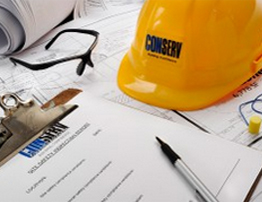New Building Work and Certification Matters
The introduction of the 1975 Building Act and Standard Building Regulation 1993 saw building approvals and a regulated inspection process become part of our state law. Please note that in September 2006, the Standard Building Regulation 1993, was repealed and replaced with the Building Regulation 2006. Prior to 1975, local authorities controlled building approvals under their various Ordinances. It is generally acknowledged that compliance for minor works such as garages, carports, decks and habitable development of underfloor areas, was not enforced and much of this work was done without any formal process. Builders were known as “Registered Builders” and it was not until 1991 with the establishment of the Queensland Building Services Act that builders moved from being ‘registered’ only to being licensed where technical qualifications and experience standards had to be attained.
Building work that requires an approval or development application is outlined within the building regulations schedule one and usually involves things like: any work affecting the structural performance of an existing building e.g. house raising, re-location of a structure, the removal of wall(s), changes to roof, floors or existing footings/foundations and extensions to existing structures. It also applies to the smaller areas of construction like swimming pools, metal sheds, garages, carports, decks/verandas and also the primary installation of water supply and/or drainage and sewerage for the property. The latter is carried out by QBCC licensed plumbers and drain layers.
The Building Act and Regulations were amended around 2006. A licensed building certifier can only issue a final inspection certificate (Form 21) after all of the mandatory certificates (form 15’s and 16’s) have been received from the builder via the various contractors that have been involved during the construction. In years gone by it was the building certifier who was required to inspect the works during construction, as opposed to today system where there is no obligation to inspect any work physically. Most certification for construction today relies more on paperwork than assessing the quality of workmanship by inspecting on-site. It seems this is being driven by a need for a paper trail in the event of any litigation.
Unfortunately, we believe this system operating today for building certification, of focusing on the issuing of certificates rather than physically inspecting any work done, creates an almost entirely self- assessable system, where contractors only need to certify in writing that the job has been done properly and therefore results in a major decline in the quality of workmanship and very often defective and fraudulent work. Realistically if an error is made by a contractor, and it may result in them needing to spend several thousand dollars to fix, what contract would self-assess this and make sure it is corrected incurring the thousands of dollars as opposed to covering it up, ignoring it or partially rectifying it but not correctly and then dividing the certification that everything was compliant. There have been major problems in recent years with the quality of workmanship and certification within the construction industry and this seems to have increased significantly from the time the area of building certification was privatised.
A building certifier will get the bulk of their work from a builder. The very same builder who is going to be doing the project the certifier is being asked to certify. Is the builder going to engage a certifier that is more compliant to his desires or that will be problematic to the builder because they are proficient and certify in accord with his obligations under the Building Act & Regulations? It is really a no-brainer and the system from the very start is flawed when you have that level of engagement between builders and building certifiers.
To further demonstrate this, in the thousands of inspections we have carried out around, less than 10% of inspections done, when new building work is present would have been carried out by us and been found to be compliant, of a good quality and have achieved a final inspection status. Adversely, and for us incredibly disappointingly, the majority of our defective work identified when we carry out inspections is related to brand-new construction.
back to HOME








 All too often during our inspections we identify areas which are conducive to the collection of retained ground moisture near a structure. Elevated moisture levels are known to provide conditions favourable to Timber Pest activity, particularly termites, and it is vital that every effort be made to avoid these risks. The most common causes of retained ground moisture are inadequate surface water drainage, downpipes not connected to drainage outlets, no gutters in place for roofing areas, outlet pipes for air conditioners, relief and overflow valves for hot water cylinders, corroding and join leakages of gutters and downpipes, defective or incomplete flashing and plumbing for rainwater tanks leaking. These are all issues which can be, and should be rectified, if they are in existence at a property.
All too often during our inspections we identify areas which are conducive to the collection of retained ground moisture near a structure. Elevated moisture levels are known to provide conditions favourable to Timber Pest activity, particularly termites, and it is vital that every effort be made to avoid these risks. The most common causes of retained ground moisture are inadequate surface water drainage, downpipes not connected to drainage outlets, no gutters in place for roofing areas, outlet pipes for air conditioners, relief and overflow valves for hot water cylinders, corroding and join leakages of gutters and downpipes, defective or incomplete flashing and plumbing for rainwater tanks leaking. These are all issues which can be, and should be rectified, if they are in existence at a property.







